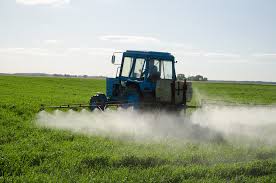25
Jan
Study Links Carbamate Insecticides to Diabetes and other Metabolic Diseases
(Beyond Pesticides, January 25, 2017) A study conducted at the University of Buffalo recently revealed a connection between two common insecticides and an increased risk for certain metabolic diseases, including diabetes. Researchers found that by binding to and disrupting melatonin receptors that control numerous physiological functions, chemicals such as insecticides can affect melatonin levels, creating a higher risk for metabolic diseases to develop. The study, Carbamate Insecticides Target Human Melatonin Receptors, was published in Chemical Research in Toxicology and was funded by a grant from the National Institute of Environmental Health Sciences, which is part of the National Institutes of Health.
The implicated chemicals in this research, carbaryl and carbofuran, are notoriously dangerous carbamate insecticides. Carbamates share structural characteristics and an ability to inhibit acetylcholinesterase (AChE), an enzyme important for the transmission of nerve impulses. When AChE is inhibited, acetylcholine accumulates leading to overstimulation of neurotransmitters, resulting in muscle weakness, confusion, and paralysis, among other symptoms. Carbaryl is said by EPA to be “one of the most widely applied insecticides in the U.S.,” since use began in 1959, with 10-15 million pounds used annually. It is a broad-spectrum insecticide used on a variety of crops, in forestry and on ornamentals, in home gardens, and on livestock and pets. It was recently the subject of a U.S. Environmental Protection Agency (EPA) assessment on the impact of common pesticides on endangered species, which found that they were “likely to adversely affect” nearly 97% of species listed under the Endangered Species  Act. The other chemical the study focused on, carbofuran, a restricted use pesticide, is the most toxic of the carbamate insecticides. According to the U.S. Fish and Wildlife Service, all registered uses of carbofuran kill wildlife. Carbofuran is also extremely toxic to humans, and in 2009 EPA revoked all food tolerances for the chemical, eliminating allowed residues on domestic and imported foods.
Act. The other chemical the study focused on, carbofuran, a restricted use pesticide, is the most toxic of the carbamate insecticides. According to the U.S. Fish and Wildlife Service, all registered uses of carbofuran kill wildlife. Carbofuran is also extremely toxic to humans, and in 2009 EPA revoked all food tolerances for the chemical, eliminating allowed residues on domestic and imported foods.
By combining computer modeling on millions of chemicals with standard wet laboratory experiments, researchers found that insecticides, specifically carbaryl and carbofuran, were “structurally similar to melatonin and that both showed affinity for the melatonin MT2 receptors that can potentially affect glucose homeostasis and insulin secretion,” according to Marina Popovska-Gorevski, co-author of the study. She continued, “That means that exposure to them could put people at higher risk for diabetes and also affect sleeping patterns.” Disrupting sleeping patterns, or what is often referred to as the human circadian rhythm, is a mechanism known to put people at higher risk for diabetes, though, according to the authors, the connection is not well understood.
Overall, researchers claim that their findings suggest “a need to assess environmental chemicals for their ability to disrupt circadian activity,” though federal regulators have not yet made this kind of research a priority. For the researchers, this is just one of the first steps in their long term goal to develop a Chem2Risk pipeline, which would assess the toxicity of the nearly 4 million chemicals in their database and allow researchers to gauge the risks each chemical presents for various disease.
“This is the first report demonstrating how environmental chemicals found in household products interact with human melatonin receptors,” says Margarita L. Dubocovich, Ph.D., senior author on the paper and State University of New York (SUNY) Distinguished Professor in the Department of Pharmacology and Toxicology. “No one was thinking that the melatonin system was affected by these compounds, but that’s what our research shows.”
The connection between common and chronic diseases and exposure to pesticides continues to strengthen, despite efforts to restrict individual chemical exposure or mitigate chemical risks using risk assessment-based policy. Common diseases affecting public health that have been linked to pesticides exposure include asthma, autism and learning disabilities, birth defects and reproductive dysfunction, diabetes, Parkinson’s and Alzheimer’s diseases, and several types of cancer. In order to facilitate access to epidemiologic and laboratory studies based on real world exposure scenarios that link public health effects to pesticides, Beyond Pesticides maintains the Pesticide-Induced Diseases Database, commonly referred to as PIDD. The scientific literature documents elevated rates of chronic diseases among people exposed to pesticides, with an increasing numbers of studies associated with both specific illnesses and a range of illnesses. With some of these diseases at very high and, perhaps, epidemic proportions, there is an urgent need for public policy at all levels –local, state, and national– to end dependency on toxic pesticides, replacing them with carefully defined green strategies.
The current database, which contains hundreds of studies, is continuously updated. Readers are urged to send studies to [email protected] that you think should be added to the database.
Source: University at Buffalo
All unattributed positions are that of Beyond Pesticides.










